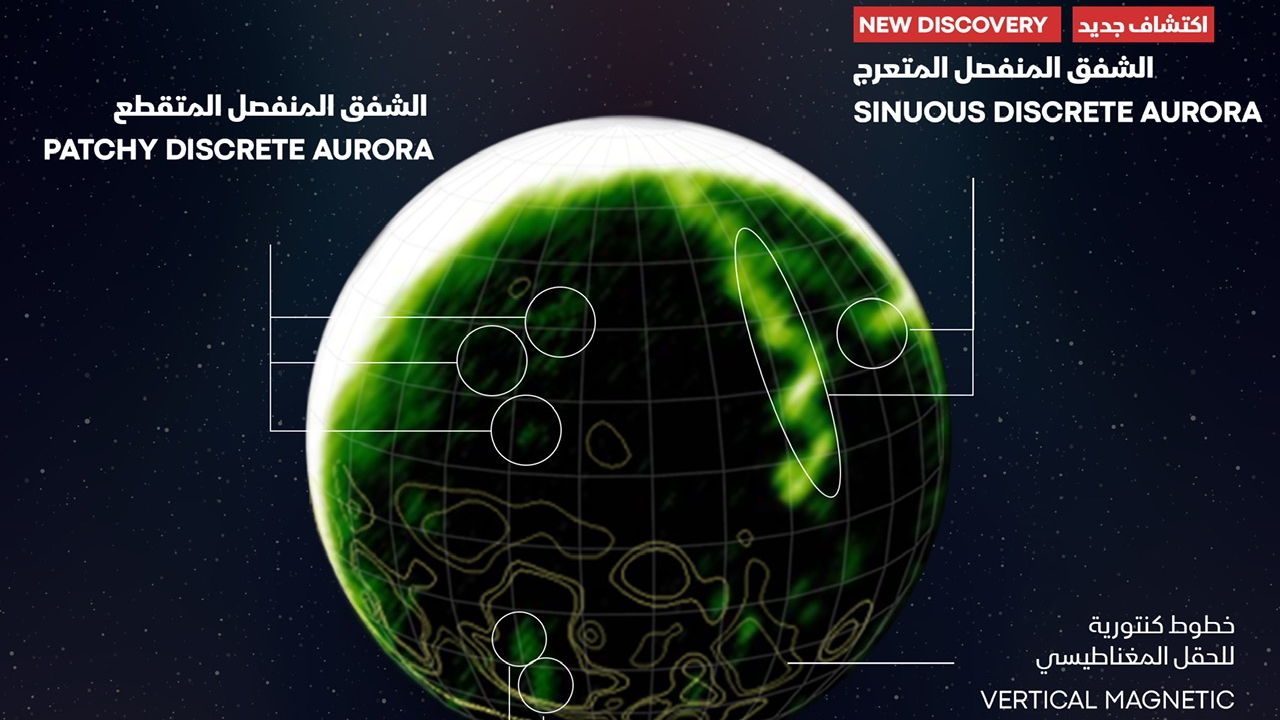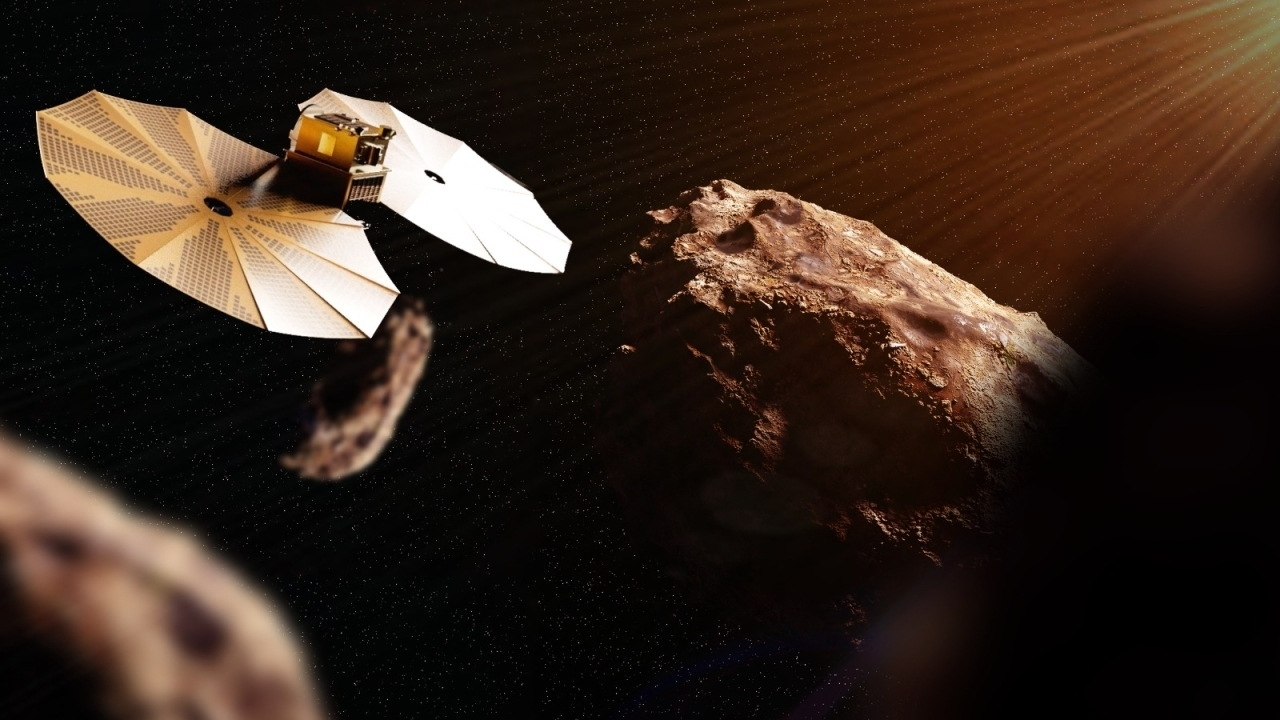Emirates Mars Mission discovers new mysterious martian aurora
The Emirates Mars Mission, the first interplanetary exploration undertaken by an Arab nation, has released a new image of Mars’ enigmatic discrete auroras.

This is following a new series of revolutionary observations that promise new answers – and new questions – about the interactions between Mars’ atmosphere, the planet’s magnetic fields and the solar wind. The observations include a never-before seen phenomenon, dubbed the ‘sinuous discrete aurora’ by the EMM team, a huge worm-like aurora that extends halfway around the planet.
“When we first imaged Mars’ discrete aurora shortly after the Hope probe’s arrival at Mars in 2021, we knew we had unveiled new potential to make observations never before possible on this scale, and we took the decision to increase our focus on these auroras.” said Emirates Mars Mission Science Lead, Hessa Al Matroushi. “We can obtain nearly whole-disk, synoptic snapshots of the atmosphere to investigate atmospheric phenomena and interactions. It means we are seeing discrete auroral effects on a massive scale and in ways we never anticipated.”
The sinuous discrete aurora consists of long worm-like streaks of energised electron emission in the upper atmosphere extending many thousands of kilometres, stretching from the dayside into the nightside of Mars. Imaged when Mars was experiencing the effect of a solar storm, resulting in a faster, more turbulent stream of solar wind electrons than usual, these aurora observations are some of the brightest and most extensive yet seen by Hope. They include elongated shapes, which may be caused by similarly elongated regions of electron energisation conditions in the magnetotail.
The interplanetary magnetic field is carried by the solar wind and drapes around Mars, combining with magnetism in the Martian crust to form Mars’ magnetotail, a complex array of magnetic fields on the Martian nightside.
Omran Sharaf, EMM project director, said: “Having additional bandwidth and resources available to us meant we could be opportunistic and focus more on the area of discrete auroras than we had originally planned. That agility has certainly paid off as we have now opened up whole new avenues of investigation into these transient and dynamic phenomena. Novel science was a core mission objective and this is certainly novel.”
Observations made using Hope’s EMUS (The Emirates Mars Ultraviolet Spectrometer) instrument range between 90-180 nanometre wavelengths. Found at a wavelength of 130.4 nm, the UV emissions imaged in the new set of observations show where energetic electrons are smashing into atoms and molecules in the Martian upper atmosphere, some 130 km above the planetary surface. These electrons come from the solar wind and are energized by electric fields in Mars’ magnetosphere.”
Stay up to date
Subscribe to the free Times Aerospace newsletter and receive the latest content every week. We'll never share your email address.

